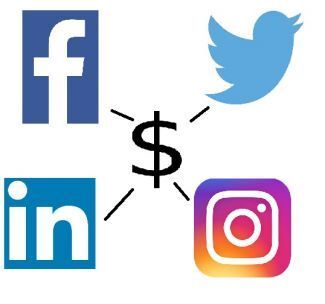What Is a Digital Marketing Strategy? A Complete Guide (2025)

- Set SMART marketing goals to create clear, measurable objectives that can guide your strategies effectively.
- Define your target audience through detailed buyer personas to tailor your marketing messages and channels.
- Plan out the customer journey stages to deliver targeted messages that move prospects through the sales funnel.
- Ensure your website is designed for conversions with engaging content and an intuitive layout.
- Utilize CRM tools to manage leads and streamline processes for converting leads into customers.
Running a digital marketing campaign without a strategy is like exploring a new city without a GPS. You will likely take many wrong turns, resulting in frustration and an unnecessarily long route to get where you want to go. You might not even get there.

As an itinerary keeps you on track for a great trip, a digital marketing strategy maximizes your time and budget. A digital marketing strategy is a plan that helps your organization attain specific goals through carefully selected marketing channels such as advertisement, social media, and website content.
What Is Digital Marketing Strategy? What Are Its Key Elements?
A digital marketing strategy is a comprehensive plan designed to help an organization utilize selected online marketing channels effectively. These channels can include social media, content marketing, email, search engines, and more. The primary goal is to achieve specific business objectives, such as increasing brand awareness, generating leads, or driving sales.
Working with hundreds of clients across many B2B verticals, we've found the most successful digital marketing strategies to have 12 components. You don't have to put each of these in place by next month, just as you don't have to visit every location in one day. However, adding these elements to your digital marketing strategy might be the difference between seeing a strong fiscal year for your company and giving away market share to your competitors.
Key Elements of a Digital Marketing Strategy
- SMART Goals: Setting Specific, Measurable, Achievable, Relevant, and Time-bound objectives.
- Target Audience: Identifying and understanding the demographics, behaviors, and preferences of your ideal customers.
- Customer Journey: Mapping out the various stages a customer goes through from awareness to purchase and beyond.
- Messaging: Crafting the right messages that resonate with your target audience at each stage of their journey.
- Website Optimization: Ensuring your company website is user-friendly and optimized for conversions.
- Content Marketing: Creating high-quality, valuable content that attracts and engages your audience.
- SEO: Optimizing your content to rank higher in search engine results, thus driving organic traffic.
- Engagement: Making your content engaging through various formats like videos, infographics, and interactive elements.
- CRM Tools: Using Customer Relationship Management tools to manage leads and customer interactions effectively.
- Paid Ads and Social Media: Allocating budget for targeted ads on search engines and social platforms to reach a broader audience.
- CRO: Employing Conversion Rate Optimization techniques to improve the percentage of visitors who take desired actions on your website.
- Data-Driven Decisions: Constantly analyzing data to refine and adjust your strategy for better results.
By integrating these elements, a digital marketing strategy ensures that all marketing efforts are aligned towards achieving the business goals, thereby maximizing the return on investment. Let's dive deeper.
1. Set SMART Marketing Goals
When creating an itinerary, you have a destination in mind. Goals are the destination that digital marketing strategies aim towards. This end state must align with the company's biggest challenges and aspirations to receive the support it needs from stakeholders.
Whatever your goal, ensure you can measure it to report on its progress and reevaluate paths. Without measurability, evaluating the success of marketing initiatives becomes challenging, hindering the ability to make informed decisions or demonstrate the impact of the team's work.

You can set measurable goals using the SMART framework. SMART stands for Specific, Measurable, Achievable, Relevant, and Time-bound. These goals eliminate ambiguity and give a sense of direction, allowing the team to allocate resources and effort more efficiently. By establishing measurable metrics, such as revenue growth, customer acquisition, or website traffic, the team can track their strategies' effectiveness and identify improvement areas.
To illustrate a SMART goal, consider an example of a company with a business goal of growing its clientele list by 20% to meet investors' demands. In that case, a SMART marketing goal could be: "Increase inbound traffic by 247% and 15 inbound leads within three months by writing new content and rewriting existing ones using language that our target audience uses."
The goal is achievable and measurable; we recently got (and reported) these results for a client. It is relevant, as more leads align with what our customers need. Finally, the goal is time-bound, with a three-month timeframe, providing a sense of urgency and a deadline for evaluation and adjustment.
2. Define Who You Are Marketing To
When traveling, you know the importance of understanding how locals interact—if you seem like an odd tourist who doesn't know the culture, you might not bond with locals.
The same rings true for digital marketing. As a digital marketer, you need to understand your target audience, demographics, and the psychology of existing and new customers to ensure what you sell and the messages you use to sell are relatable. This research is often condensed into a buyer persona or ideal customer profile.

A buyer persona is a fictional representation of your ideal customer. It captures your target audience's attributes, preferences, and behaviors. Creating buyer personas is essential in developing effective marketing strategies, as it helps you understand and connect with your customers on a deeper level in the right channels. For example, if your buyer persona is a 27-year-old journalist who writes about tech, Twitter might be the best channel to communicate with them.
The information to fill up your buyer persona will come from research. Have you had proven success with a certain group of individuals? Great, describe them!
Begin to identify these personas with basic background information such as job title and location. You also want to determine what these people want, such as a solution to a specific problem that you hopefully solve.
Be specific. Skip the stereotypes and look into factual insights through tools like Facebook Audience Insights and Google Analytics. The less you assume what your customers want, the likelier each campaign is to succeed.
3. Plan Out Your Customers’ Journeys

There are several steps a potential buyer must move through to get to the point of buying your product and advocating for it. The stages vary in order and between companies, but they usually fall into awareness and education, consideration, decision, conversion, and recommendation:
- Awareness: Customers don't know you. This is the stage to focus on brand awareness and establishing expertise while targeting decision-makers in ideal client verticals. The KPIs for this campaign type could include reach, impressions, and engagement.
- Consideration and decision: Customers are getting to know you. You need to influence and incentivize prospects who know about you to consider you the best option. The KPIs for this stage often relate to lead generation, e.g., case studies downloaded.
- Conversion: Customers have doubts about you. It's your chance to retarget past website visitors or better communicate your value to existing ones. The KPIs for this campaign could be meetings booked through a contact form or a signed contract/proposal.
- Recommendation: Customers had a positive experience with you. How will you persuade them to talk about you? The primary KPI here is the number of referrals.
Mapping customers' journeys help identify key touchpoints throughout the entire buying process. By understanding customers' different stages, you can deliver the message they need to hear to reach the next stage.
For example, through customer interviews, we found that prospects considered one of our clients because of their portfolio. But they bought from our client over alternative solutions because of our clients’ value propositions. Presenting case studies to people still considering options and value propositions to people making a decision—not the opposite order—raised our chances of selling.
4. Get Your Messaging Right
Let's say you're traveling solo and pop into a local restaurant. You know there's a social art and etiquette to approach someone you wish to speak to. The same goes for your marketing efforts.
Craft your messaging to resonate with those you are trying to speak with, the personas from step two. The voice and content of your campaign should speak to them in a way that they understand, regardless of the format of your message. Your research and planning from the previous steps come full circle here.

If you've identified where they are in the sales funnel, you should know where to kick off the conversation. For example, if they don't know anything about you, establish your expertise through words they resonate with and build trust.
By getting your messaging right, your audience will be far more receptive to what you have to offer.
5. Make Sure Your Website Is Suitable for Selling
Your company website is the main gateway through which most (if not all) of your prospects will pass before becoming actual customers. So its design must be intuitive and appealing and persuade visitors to follow steps that lead to or encourage a sale. Without these elements, your chances of turning visitors into customers are slim.
For example, if you own a digital marketing company, your own digital marketing strategy should be a showcase of your expertise. Your website should not only be visually appealing but also strategically designed to attract and convert potential clients. Demonstrate your understanding of SEO, content marketing, social media advertising, and other digital marketing tactics through your own online presence. By effectively implementing your digital marketing marketing strategy, you're not only promoting your services but also building credibility and trust with potential clients.
Basic web design concepts should be employed to create your website to ensure optimal results. Check out our Basics of Web Design and Understanding Web Development guides for more information.
How the pages are set up and laid out isn't enough, though, if the content itself is not relevant and exciting. Careful attention should be placed on creating engaging material for visitors to connect with. Here, Digital marketing channels are essential ways to grow your voice and strategy.
Get our Digital Marketing Strategy guide now!
6. Be Strategic About Your Content Marketing
As an alternative to conventional advertising, content marketing provides information, solves problems, and engages the target audience through blogging, videos, social media, and other media channels. Content Marketing aims to catch people's attention, establish credibility, and nurture long-term relationships.
But you can't simply write just any content or follow a "spray and pray" method. You must be strategic, connecting your content to your business and target audiences' needs.
Most companies aren't. They over-focus on what to write about, what words they want to own, the SEO, and how to optimize their content for each channel. These are all crucial components to give your content the attention it deserves, as we'll discuss in further sections. But focusing on these without considering your business model, ideal customer profiles and their buyer journey, and messaging is a recipe for unprofitable sparkly content. As a result, producing profitable, high-quality technical content starts with answering questions that acknowledge the importance of these four elements, such as the following:
- How does our content directly contribute to generating revenue? Are we creating content that supports lead generation, customer acquisition, or upselling/cross-selling efforts?
- How can our content support customer retention and repeat business? Are we providing post-purchase content that adds value, encourages loyalty, and promotes upselling or cross-selling opportunities?
- Are we analyzing and measuring the impact of our content on revenue generation? Are we tracking conversion rates, average order value, or customer lifetime value to evaluate content effectiveness in driving revenue?
- How does our content align with our pricing strategy and business model? Do we highlight the value proposition and justify the price point effectively through our content?
- Are we collaborating closely with the sales and marketing teams to ensure our content aligns with their strategies and supports revenue generation efforts? How can we optimize content for sales enablement?
We could ask you dozen of questions to boost your confidence that your blog and social media marketing has a high chance of being profitable. But, as long as you answer these sincerely and the previous components are in place, you will be on a path toward success.
7. Optimize Your Content for Search, So It Brings a Steady Flow of Leads
Around 75% of users never scroll past the first page of search results, making it imperative to appear on it. The most cost-effective way is through Search Engine Optimization (SEO).
Search engines operate by quickly crawling through every indexed website when a query is performed, then processing the information with an algorithm that assigns a rank to each page based on a specific set of criteria. SEO encompasses principles to follow before, during, and after publishing any page on your website to increase the chances that Google's crawler ranks your pages higher than your competitors. Assuming you optimized your website for conversions in step 5, higher rankings often equal organic search market share.
While a lot of factors influence whether your content will rank or not, our experience bringing inbound marketing qualified leads (MQLs) for dozens of clients on autopilot has unveiled parameters proven to affect rank, such as:
- The number of quality visits and level of engagement each page gets
- Using keywords that clearly define the topic being addressed by the content
- The number of internal and external links that connect to and from each page
Think of ranking factors as prerequisites to have a chance to compete. For content to be profitable, you need all the ingredients we have described so far. But if you want your content to have a chance to prove it's ready to generate revenue, tick as many components as possible to rank on the first page.
Besides increasing the number of visitors who click on your website, ranking high on Google helps you keep those rankings. This is because Google tracks your Click-Through Rate (CTR): the rate at which users who perform a query click to access your content. This metric helps establish credibility for the content and authority of your website.
These basics of SEO will get you farther than many competitors, but if your goal is to lead the market, we recommend you spend a few hours reading Moz's renowned guide for SEO beginners and learning to implement its insights over the next few months or years.
Alternatively, you can work with our team of SEO industry veterans to start seeing inbound leads in as little as one month.
8. Make Your Content Engaging
LinkedIn, influencer marketing, traditional marketing, affiliate marketing, and beyond; each digital marketing channel requires a unique online presence, content, and approach to turn potential prospects into leads and clients. Each channel deserves its blog post, so for now, we'll share some actionable tips that apply to all.
Make sure the introduction can hook people. This applies to all types of content: TikTok, webinars, podcasts, pay-per-click (PPC), and so on. The content should begin with ideas, questions, or statements that shock, entertain, awe, interest, or inspire. The reader may leave the page if you don't hook them within those first few lines.
Keep the main idea above the fold. The fold is the bottom line where most screens cut off the initial display. Ensure your first (or at least the second) paragraph briefly explains the content. Readers want to be sure what they're getting into before going forward.
Use multimedia. Images, videos, and infographics are all proper marketing tools to keep your content dynamic. Too much text on a screen can feel burdensome for some readers, and the idea is to keep them engaged.
Use your own voice. Every company has a unique voice. You want people who visit your company website to know what yours is, so ensure all your content matches it. If the people engaging with the content feel the tone is insincere or something is off, even if it's at some unconscious level, they are more likely to leave or react negatively.
9. Nurture Leads Using Customer Relationship Management (CRM) Tools
Once visitors are attracted to a page and significantly engage with the content, they become leads. Leads are like small seeds that need to be nurtured and cared for so they'll blossom into customers. The best way to accomplish this is to have efficient Customer Relationship Management (CRM) tools.
A CRM provides tools to gather, manage, and act upon the information you collect from people who interact with your website or brand. The data gets to one place, so any client-facing department can quickly access it if necessary.
There are many ways to collect data from visitors and turn them into leads. It could be a simple form that asks for contact information to subscribe to a weekly newsletter or a call to action button that offers access to a free guide in exchange for an email address. You will need to lean on Conversion Rate Optimization (CRO), which we will explain below, to determine your best option.
Besides informing decisions, your CRM will help you convert leads into customers through email marketing. CRMs like HubSpot have tools and templates to create email marketing campaigns that speak directly to your audience. For example, they'll share try-and-tested call-to-actions with high conversion rates. These benefits from email and the aid from CRMs turn your campaign from ideas to results.
The magic of CRMs is that you can segment who you market to. Narrowing down communications relative to your audience increases your chances of conversions because the message is more likely to resonate. One way to segment is to keep existing customers engaged. By keeping tabs on those who've already become clients and applying some clever marketing tactics to keep that interest going, companies can increase their rate of return for more purchases.
Of all the Customer Relationship Management (CRM) systems available, we prefer using HubSpot. Before using it, we had trouble keeping track of every step in the customer's journey. Sometimes, people would fill out forms on our website but wouldn't talk to our marketing team. Or our sales team would have calls with potential customers without knowing what those customers already knew about us or what they expected. We tried using different tools and data sources to fix these issues, but only HubSpot solved them.
We don't know your business needs, so we don't know if HubSpot makes sense for you. However, you can use our free HubSpot ROI calculator to decide that yourself.
10. Use Paid Search and Social Media Ads To Convert Prospects Who Left Your Website or Haven’t Visited It Yet
Every digital marketing strategy should include a part of the budget for paid web marketing. While content and SEO drive traffic, paid marketing offers unique valuable insights.
Ads for both search engines (e.g., Google Ads) and most social media offer immediate data that you can use to glean information from prospects. Because both those platforms make money when you do, they provide opportunities for precise remarketing: your company can target prospects that showed some interest in what you offer but didn't actively engage with ads better tailored to their interests.

There is a specific science to implementing search engine marketing activities and running Google Ads or Bing Ads. Ads need to be optimized, and best practices come into play when laying out your tactics. Learning the basics of paid search is extremely important if your company wishes to find success.
For paid social media, the same principles apply. The difference here is that your company needs to be very careful and astute when making choices depending on how much budget you've allocated for this particular area.
Understanding who your prospects (or Buyer Personas) are is critical. This will help you narrow down the list of platforms you may wish to use. After all, each social media platform tends to have its own set of demographics, so knowing what your prospects are more likely to use will increase your success rate.
As a reference, the people at Hootsuite compiled a list that offers a rather nice overview of demographics per platform.
Equally important to the type of platform is the type of message you'll advertise, so be sure to plan out what you'll say or show with a clear understanding of what your prospects are most likely to connect with.
11. Leverage Conversion Rate Optimization (CRO) To Improve Your Conversion Rate
Traffic is not enough. You need to optimize your website for conversion so those visitors become quality leads, which means they engage with what they find and become potential customers or clients.
CRO is a systematic set of practices that improve each page on your website, so it becomes its best possible version. This is not improvisation or guesswork based on what you think will fix issues or boost engagement. But proven methods and practical tools that provide complex data, which you can turn into precise changes that will dramatically help with the user experience.
CRO starts with auditing your website. With the help of tools such as Hotjar, you can assess page performance through heat maps that reveal click and scrolling engagement. This powerful service also provides anonymous recordings of page visits, showing what each visiting user did, what they stopped to read, where their cursor moved, and what they chose to click.
Hotjar in use
This cornucopia of information can be used to determine what areas of the pages aren't getting attention or engagement, which is, in turn, the kind of data that experienced minds can use to define concrete and effective changes that will radically improve performance.
This is an intricate process, and it's often recommended that companies make sure their teams are knowledgeable in this area of work to reduce the level of testing and trial and error. If your company plans to employ digital marketing services from a third party, it's a good idea to ensure they have the tools and know-how to boost your conversion optimization rate.
12. Shift Priorities Based on Hard Data
A digital marketing strategy is about removing speculation from the equation and focusing your tactics based on accurate information or at least educated estimates and approximations. As your marketing work progresses, your company will start gaining complex data. You can use it to reshape, refocus and retarget efforts to optimize and maximize results.
You can read our guide on making data-driven marketing decisions to benefit from the higher profit ceiling that these decisions open. However, to do that, you'll first need to gather the data from which to act on.
Data can come from all types of sources. Social media platforms, for example, use their own metrics based on performance, which is undoubtedly very useful. But there is one tool that is remarkable in terms of understanding the traffic that reaches your website: Google Analytics.
You can install Google Analytics tracking code to acquire information about all traffic sources: the pages visitors reach, where they are coming from, how long visitors stay, how often they engage with other pages, the country the traffic comes from, and several additional insights into the type of people reaching your content.
Analytics can confuse the inexperienced, but Google offers courses for beginners and more advanced users. Whichever decision-maker from your team does the course can even receive certification from Google.
If getting a senior-level executive to spend months learning how to set up your data-tracking system and improving their decision-making based on mistakes doesn't appeal to you, we can set it up for you.
Work With O8 to Create and Execute Your Digital Marketing Strategy
Each component is crucial, but telling you they are easy would not be ethical. Learning to master some of these elements can take decades if you are lucky enough to reach that point.
Instead of taking off executives to their jobs and forcing them to upskill in areas they might not be naturally apt in, you can let us create and execute your digital marketing plan and strategy. O8 is a fractional marketing team of marketing industry veterans that have solved the same problems you are solving dozens of times for companies inside and outside your industry.
We allow you to delegate critical, time-consuming, niche parts of your business so you can meticulously plan how to grow other parts. All in about half the cost of hiring two of those experts full-time.
Ready to take your next step? Get in touch with the experts at O8 for expert insights and digital marketing strategies that move the needle.








